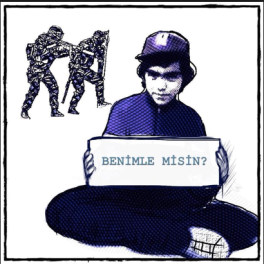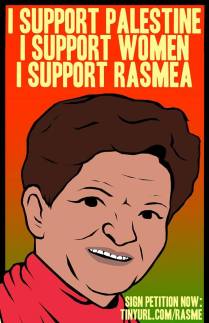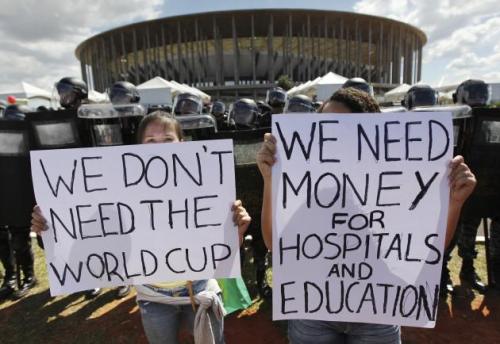Today, in commemoration of the 69th anniversary of the US dropping an atomic bomb on Hiroshima, WRL lifts up the voices of uranium-impacted communities through the 2012 Nuclear Free Zone Declaration from Multicultural Alliance for a Safe Environment (MASE).
Since the boom of nuclearism in the 1950s, indigenous communities have resisted the contamination of their land by US government collaborations with uranium mining companies. Indigenous led coalitions like MASE have been organizing their communities in the US Southwest to hold government agencies and companies accountable, demanding the clean up of the toxic legacy of uranium mining that has lead to a host of life-threatening health problems for people living near former mining sites. They are also engaged in an ongoing struggle to stop new mining operations on land that has already been poisoned by nuclearism. On October 20, 2012, with support from WRL, MASE adopted a Nuclear Free Zone Declaration, asserting the sovereignty of people’s rights to safe drinking water and to be free from exposure to hazardous and toxic substances.
NUCLEAR FREE ZONE DECLARATION for Northwest New Mexico/Grants Uranium Belt
Uranium mining and milling activities in the Grants Uranium Belt of New Mexico form a critical link in the nuclear fuel chain that supplies nuclear power plants and nuclear weapons development. Radioactivity is released at every stage in the nuclear fuel chain, including uranium mining and milling.
The 1872 Mining Act, originally created to help small miners has become a form of corporate welfare, and has turned cultural landscapes throughout the United States into National Sacrifice Areas, where local communities have been disregarded and the need for ongoing reclamation has resulted in a legacy of contaminated air, water and soil.
Legacy contamination from historic mining and milling in the Grants Mining District has not been completely assessed, nor has the region has been restored to pre-mining and milling conditions.
Whereas:
Uranium legacy contamination poisons our water, land, and lives through ongoing radioactive releases that will continue to plague our cultural landscape and future generations,
There are better job opportunities for local populations in cleaning up the existing legacy of contamination and exploring alternative energy economies,
A 2011 National Academy of Science report made it clear that there is no “safe level” of human exposure to radiation,
Past and present generations residing in the Grants Mining District have been disproportionately affected by uranium mining and milling activities that went unregulated for at least two decades,
Aquifers and waterways contaminated by uranium mining and milling can never be fully restored to pre-mining and milling conditions,
The continued removal of uranium from regional aquifers will result in a permanent loss of water from these deep water sources,
Renewed uranium mining in the Grants Uranium Belt will jeopardize the public health, natural ecosystems, and traditional cultural landscapes by further degrading our air and water quality,
The toxic waste generated from new uranium mining and milling will create an additional legacy for future generations,
Uranium mining violates our basic human rights to a clean and usable water supply, endangers our many traditional cultures, the public health, and interferes with the natural cycles of Earth and Water.
We are committed to protect and restore our shared water resources that are so critical to our continued survival in an arid desert environment, our quality of life, and multi-cultural preservation,
Therefore:
We, the undersigned, join a growing global movement to limit the use of nuclear power and transform National Sacrifice Areas into Nuclear Free Zones.
We endorse the development of renewable energy sources that sustain- not destroy- our public lands, multi-cultural landscapes, and natural ecosystems.
We will provide direction to our lawmakers and private industry to invest in renewable, clean energy that conserves and protects our forests, watersheds and cultures.
We further encourage investment and job creation in the cleanup of the historic uranium legacy contamination that still exists within our shared watersheds.
We further urge all federal and state regulatory agencies to promote the right to a clean, sustainable water sources within their jurisdictions as an element of their public trust to further the best interests of the public welfare, including those poor, minority populations already overburdened by legacy contamination from uranium mining and milling in the Grants Mining District.
We urge the United States Forest Service, the Bureau of Land Management, and New Mexico Mining and Minerals Division not to approve any new mining plans of operation on public lands in New Mexico until the complete reclamation of ground water, soil, and air contamination from historic uranium mining in the Grants Mining District is fully achieved.
In Conclusion,
We, the undersigned, pledge to work in solidarity with all people who wish to break free of their nuclear fuel chains and dependency on non-renewable, polluting sources of energy and move towards the development of renewable and sustainable energy that does not threaten the public health, public water supplies, or our special landscapes.
Want to support the Navajo movement for creating a Nuke-free nation?
With thanks to Earth People’s Blog for the declaration text!













